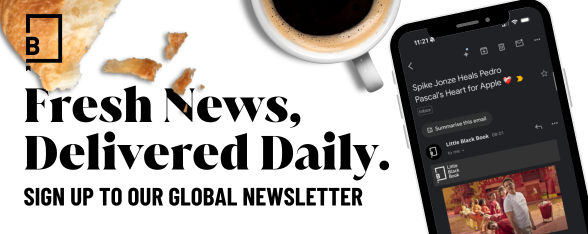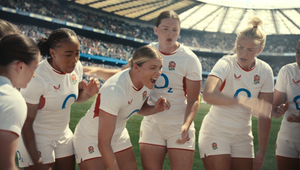
How the Cheeky Meerkats Found TikTok Success with #Meertok

There’s something irresistible about meerkats. Whether they pop up in a lushly-shot documentary or we see them in the flesh (in the fur?) at a zoo or in the wild, their playful antics and unpredictable, whippet-alert movements are eyeball magnets. And it turns out that what’s true for David Attenborough or Longleat Safari Park is also true for TikTok.
Since launching on TikTok, the iconic meerkats of price comparison brand Compare the Market, have engaged millions of users with their quirky, DIY videos populated with Adam & Joe Show-style soft toy puppet shows, lo-fi memes screen-grabbed from their ATL TV ads and awkward appearances from normcore icon Sergei.
The Compare the Market channel - cheekily referred to as #Meertok - started up in June, has over 26 thousand followers and its videos regularly clock up over four or five million views.

For the brand’s head of content Gina Roughan, the meerkats at the heart of Compare the Market’s marketing feel like they are made for TikTok - even though smoking jacket-clad Aleksandr and his anxious assistant Sergei first hit our screens in 2009, seven years before the short-form video platform came into being.
“I think they are just this amazing branded device that's evolved over time. They just really burrowed their way into the national consciousness.They’re much-loved, warm, furry, you can't help but kind of warm to them. And there’s a cheekiness as well. It's very in keeping with our sense of humour. So they were perfect for TikTok. We knew that the platform was character-led.”
Having done plenty of research into the platform, they’d seen what was working for other brands. Duolingo’s Owly is one example that’s worked incredibly well. Knowing that characters combined with a natural, rough-and-ready aesthetic was proving popular on the platform, the team at Compare the Market and their agency VCCP felt that they were in a good position to take those assets that had proven so effective in other channels and translating them into what would become #Meertok.
However, before launching into the TikTok-verse, the team needed a strategic reason to do so. As the media landscape becomes more fragmented and the big appointment TV moments become less frequent, at the same time there’s a new generation maturing into the car/home/pet/travel insurance or utilities market.
“We know where the growth areas are, and that's on those social platforms where people are scrolling infinitely. There are astonishing figures of how much time people are spending on YouTube, on TikTok. These video-first platforms do deliver that kind of always-on authenticity, and they are the birthplace and a lot of these kinds of trends. So that's where we are looking. We would never, in a million years, be thinking about moving away from advertising wholesale. But this is just about reintroducing the brand, or reminding people about the brand on some of these new platforms and reaching new audiences and new ways that are potentially a little less polished than we'd been in the past.”
Digging a little deeper, the team has found that gen z has a very different relationship with the brand compared to any other generation that’s come before it. And that’s thanks to the adorable, collectable soft toys that for years were a key part of the brand’s promotional activity. For those in their early twenties and late teens, they’ve grown up with little plushy Sergeis, Aleksandrs and members of the wider meerkat family like baby Oleg. Perhaps they’ve received one from a grandparent who has changed their car insurance, but however it is they’ve come by them, these characters and toys have become part of the texture and fabric of their youth.
“There’s a lot of nostalgia there, which is obviously also inherent to the platform, and a lot of love for those toys specifically. I think it has been surprising for us to see the levels of people who are potentially coming into us as a brand for the first time, but also the large majority of people who are now recognising and being reminded of the brand by that vehicle of the toy.”
Of course, transforming those meerkats from nostalgic memories to TikTok natives involved a period of adjustment. Working with their partners at VCCP, the Compare the Market marketing team had to develop a fleshed out strategy for TikTok, including a way to translate the brand’s tone to TikTok.
“We looked at that really carefully. We knew that the platform really was all about authenticity - that’s what really differentiates it [from] some of the other platforms that are more shiny and kind of about the perfect lifestyle. We could never just take CGI characters and put them on that platform. It just wouldn’t work. It’s not that lo-fi authenticity that we wanted to be part of,” explains Gina.
And so they leaned into the idea of taking archive material and leveraging assets like the toys, rather than creating the slick CG animations of the TV advertising.
One surprising discovery that’s come about in the process of ‘translating’ the brand to TikTok is that it’s poor old Sergei who has emerged as the central character of #Meertok. While Sergei plays sidekick to confident Aleksandr in the TV ads, there’s something about Sergei’s vulnerability and authentic lack of cool that’s connecting with empathetic gen z. “[There’s] a lot of sympathy for Sergei, the downtrodden member of the meerkat family!” notes Gina.
Whether it’s the surprising popularity of Sergei or the nostalgia appeal of the soft toys, Gina says that the team has been audience-centric in its approach, open to experimenting, testing and taking its lead from TikTok viewers and not being so single-mindedly wedded to one approach. You'll see the meerkats jumping onto meme formats like 'Fit checks' [outfit checks, for the unitiated] and 'POV', as well as chatting about hot topics like the World Cup and I'm A Celebrity... Get Me Out of Here! “The key thing is that everything we’re doing at the moment is absolutely audience-driven. VCCP talks to us about what’s happening in terms of cultural and social trends. I think it’s in terms of what we do next, it’s key to be audience-centric and to let them guide what we do next as opposed to being tucked down.”
While the millions of eyeballs and seemingly oven-ready characters may make it seem that Compare the Market’s TikTok journey has been free of challenges, that couldn’t be further from the truth. As the brand operates in the financial sector, it’s subject to numerous complex regulations about what it can and cannot say or do. When you’re creating content for a platform where responsiveness and swiftness are key, that’s a pretty tricky situation to navigate.
Bringing #Meertok to life has been a joint effort between the Compare the Market team and VCCP, in a hybrid model. The team at VCCP drive strategy and insights as well as production on the bigger, more complex projects like the recent Dancing Sergei filter or creating sets for the toys. However there’s also a team inhouse that can react to trends, turnaround content and respond to comments while also being close enough to the rest of the business to navigate the compliance issues that come with being part of a regulated sector.
For Gina, this hybrid is the best of both worlds. “So between VCCP, and now that internal studio, we work within those parameters to ensure that we're as timely and relevant as possible on the platform,” she explains.
Senior social & content planner at VCCP London, Camila Toro is full of praise for Gina’s drive in pulling everyone together from agency to marketing team to the wider Compare the Market gang and bringing them along on the journey. “I think Gina has been amazing, really pushing for all of the success of Compare the Market on social. It's been all Gina and her team, which has been amazing, because it's not easy, especially in this category.”
Looking forward to 2023, Compare the Market is now looking to use what they’ve learned on TikTok to tailor how they show up in other spaces. After all, if normcore Sergei is the obvious poster child for TikTok, perhaps show-off Aleksandr might have a natural affinity for a perfectly curated Instagram or a YouTube vodcast. As well as delving deeper into TikTok, the team has, within the last week, started its first activity on Instagram and the team has also started exploring the possibilities of YouTube.
“We are really ambitious for the social strategy, and where we go next.” says Gina.















